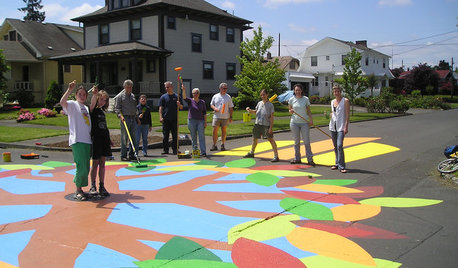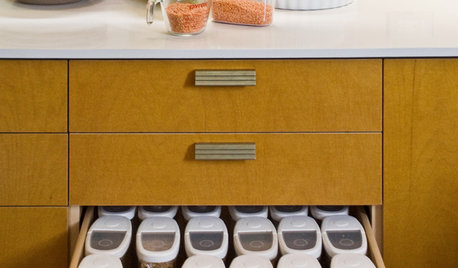Does anyone here raise fish?
canuckistani
15 years ago
Related Stories

INSIDE HOUZZHow Much Does a Remodel Cost, and How Long Does It Take?
The 2016 Houzz & Home survey asked 120,000 Houzzers about their renovation projects. Here’s what they said
Full Story
MOST POPULARWhen Does a House Become a Home?
Getting settled can take more than arranging all your stuff. Discover how to make a real connection with where you live
Full Story
FUN HOUZZDoes Your Home Have a Hidden Message?
If you have ever left or found a message during a construction project, we want to see it!
Full Story
BEDROOMSThe Cure for Houzz Envy: Master Bedroom Touches Anyone Can Do
Make your bedroom a serene dream with easy moves that won’t give your bank account nightmares
Full Story
COMMUNITYCommunity Building Just About Anyone Can Do
Strengthen neighborhoods and pride of place by setting up more public spaces — even small, temporary ones can make a big difference
Full Story
KITCHEN DESIGNThe Cure for Houzz Envy: Kitchen Touches Anyone Can Do
Take your kitchen up a notch even if it will never reach top-of-the-line, with these cheap and easy decorating ideas
Full Story
CLOSETSThe Cure for Houzz Envy: Closet Touches Anyone Can Do
These easy and inexpensive moves for more space and better organization are right in fashion
Full Story
KITCHEN DESIGN6 Clever Kitchen Storage Ideas Anyone Can Use
No pantry, small kitchen, cabinet shortage ... whatever your storage or organizing dilemma, one of these ideas can help
Full Story
KITCHEN CABINETSChoosing New Cabinets? Here’s What to Know Before You Shop
Get the scoop on kitchen and bathroom cabinet materials and construction methods to understand your options
Full Story
REMODELING GUIDESBathroom Workbook: How Much Does a Bathroom Remodel Cost?
Learn what features to expect for $3,000 to $100,000-plus, to help you plan your bathroom remodel
Full Story





brendasue
natalie312
Related Professionals
Edmond Landscape Contractors · Choctaw Landscape Contractors · Lyndhurst Landscape Contractors · Post Falls Landscape Contractors · Eastlake Landscape Contractors · Jacksonville Fence Contractors · Madison Fence Contractors · Brushy Creek Fence Contractors · Centennial Fence Contractors · Charlotte Fence Contractors · Diamond Bar Fence Contractors · Roswell Fence Contractors · San Mateo Fence Contractors · Mebane Decks, Patios & Outdoor Enclosures · Morgan Hill Decks, Patios & Outdoor Enclosuresrunningtrails
sumac
canuckistaniOriginal Author
runningtrails
tripbarber
brendan_of_bonsai
runningtrails
fostina1
pamghatten
runningtrails
motanakajima
msjay2u
tripbarber
pamghatten